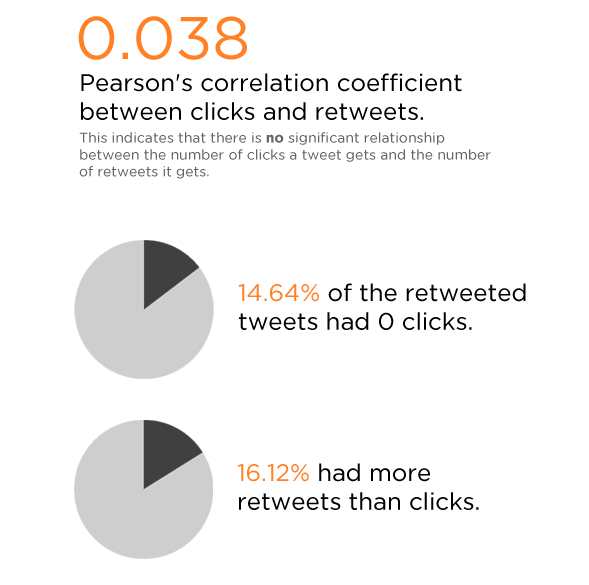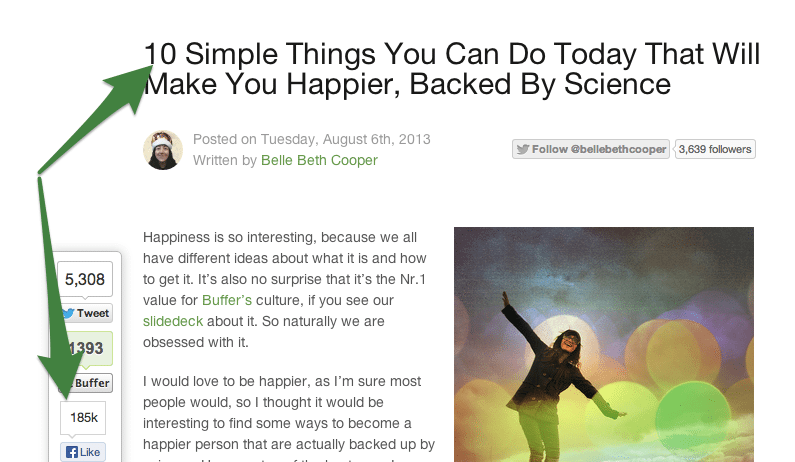11 Little-Known Scientific Facts About Blog Titles

Writing blog titles isn’t much of an art.
That may come as a shock, but the longer I’m in the business of content marketing, the more I begin to believe that it’s actually a science. It’s a highly unpredictable, non-exact science, but a science none the less.
Let’s think about the various concepts that can determine whether someone ultimately clicks-through to your content:
- Originality
- Relevance
- Appeal
- Shock-Value
- Perceived Value
Writing something that combines all of these factors into one, irresistible headline?
The kind of blog title that draws new readers from busy Twitter streams to your blog like it’s the world’s most powerful magnet? Now, that’s a science. In the spirit of fact-based discovery, I’ve curated 11 stats and studies that show just how much your headlines really matter – as well as some sage advice on just what you can do about it:
1. Titles are Your Ticket to ReTweets
In one of my favorite studies ever done on blog titles, HubSpot’s social media scientist Dan Zarrella reviewed 2.7 million Tweets with links. His findings were even more surprising than you might believe:

Here’s a recap of his almost unbelievable results:
- There’s no relation between ReTweets and blog views.
- 14.64% of blogs are shared and never clicked on.
- 16.12% of blogs are shared more often than read.
Wow. What we can gather from this is that a fantastic blog title is your ticket to Twitter shares, as well as the amazing SEO that you’ll gain from these positive social signals. While people may often share content without reading it, there’s no question that titles are an immediate key to better exposure.
To learn more about how social media and SEO are increasingly the same thing, we recommend Are Blogging and Social Media a Match Made in Heaven?
2. Digits in Numeral Form Perform Better
Entrepreneur Iris Shoor did a thorough analysis to discover what makes the top 100 blogs online different – and it turned out headlines certainly played some role. Shoor found that digitals written in numeral form were uniformly more effective; meaning that example #1 would do better than example #2:
1. 10 Ways to Hack Your Blog Growth
2. Ten Ways to Hack Your Blog Growth
Fascinating stuff, and case in point with the blog below via Buffer:

Other study results found that larger numbers significantly outperformed their smaller peers when it came to list posts – meaning it’s probably much better to cover 55 ways to write a Tweet than just 5 or 7.
3. You Can Load Your Titles with Tweetable Words
What really catches someone’s eye on Twitter or Facebook? Leave it to Zarrella to trend the most-Tweeted words until he found some answers. Turns out, including the following words in your blog titles (or the 140 characters you use to promote them on Twitter) are your best bet for exposure:
- you
- please
- retweet
- post
- blog
- social
- free
- media
- help
- please retweet
- great
- social media
- 10
- follow
- how to
- top
- blog post
- check out
- new blog post
4. People Dig Negative Titles
In another surprising finding from Shoor’s study of top-performing blogs, it turns out that journalists have been doing something incredibly right for decades; writing titles that skew towards the negative. If you had to pick between one of the following, the first would almost certainly outperform the second:
1. The 30 Worst Pieces of Content Marketing Advice Ever
2. 30 Ways to Dramatically Increase Your Blog Traffic
If you’re struggling to pen the perfect title, consider integrating words like “no,” “without,” “terrible,” or “stop.”
5. Length Matters
Content promotion platform Outbrain ran an analysis of 100,000 blog titles to check whether length affected content performance, and it turns out it definitely does. People have a strong preference for blog titles with 16-18 words:

Don’t stress if you end up with 19 words, because it’s clear that lengths around 16-18 perform nearly as well. However, your content’s probably going to suffer if you’re at the extreme of either end of the spectrum – 1-3 words, or 25-27.
6. Aggression Works
In one of the scariest turns in Shoor’s study, it appears that words with violent or aggressive association trigger fear, which in turn will inspire people to click on your content. Words like “kill,” “die” and “dead” are both dark and negative, and effective if your aim is to gain readers.
It’s certainly possible to achieve this effect without sending people running for the hills,like we did with our recent article, 7 Reasons to Believe Guest Blogging isn’t Dead. Regardless of how you choose to apply this blog title fact, use it sparingly, so you don’t develop the reputation of the creepiest blogger on the block.
7. Verbs Move People to Click
If your blog titles are noun-heavy, that could be a problem. Verbs don’t just describe motion, they inspire it. Zarrella’s research on social media click-throughs has found a strong correlation between verb usage in titles and content clicks.
It’s likely that these titles convey more value to readers, leaving them convinced they’ll finish the blog article able to accomplish something they need to do.
8. Teasing Doesn’t Work
It seems the internet’s been flooded with super-ambiguous blog titles recently:
You Won’t Believe What This Starbucks Barista Did
How This Ballerina Changed Someone’s Life Yesterday
However, when you really think about it, they’re not all that ambiguous. Most of these titles on viral sites like Upworthy give you a pretty good idea of what you’ll see when you click-through, even if you don’t know the absolute end result.
Research by SEO firm Conductor confirms that what these companies are up to work, releasing data that states specific titles outperform their more-vague counterparts by 15%. You can be a tease, but be sure to provide at least a little context.
9. Address the Reader
We all know that numbered lists are one of the most popular kinds of content online, but what’s the second? Well, according to Conductor, its posts that speak directly to your reader:
Humans are conditioned to stop and pay attention when they encounter words like “you” or “your.” If you’re not occasionally turning your headlines into a direct message to your audience, it’s certainly worth a try.
10. They’re Not Free Advertising
In one of the least surprising facts about blog titles I’ve encountered to date, it turns out that formatting your content like an advertisement is a bad plan all around. The absolute worst thing you can do, according to Maccabee agency, is include your company’s name at the beginning of your headline. The second worst thing you can do is try and drum up interest by using terms like “announce,” “win,” or “all-new.” Your titles shouldn’t exactly be understated, but they shouldn’t feel like a trying-too-hard advertisement, either.
11. Odd Works Best
What’s the absolute easiest thing you can do to improve your content today? Use an odd number. Turns out, blog posts that start with an odd number perform 20% better than their even-numbered peers. While the psychology of just why people would rather read 7 SEO tips than 6 is a total mystery, it’s simply too simple of a hack to not apply immediately.
Have you uncovered any brilliant ways to improve your blog titles and content performance? Share your secrets and thoughts in the comments!

Comments (0)